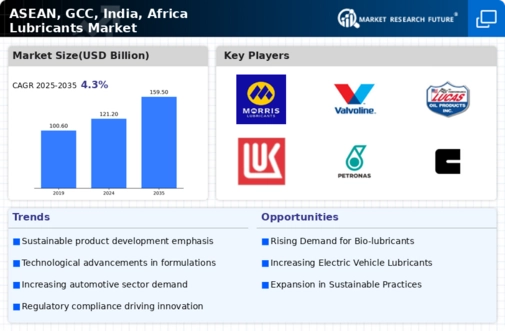Market Share
Global Lubricants Market Share Analysis
Across numerous African nations, the reliance on agriculture remains paramount. The agricultural sector stands as a robust contributor, generating up to 50% of the gross domestic product (GDP) and accounting for over 80% of trade value and 50% of raw materials for industries. Sub-Saharan African (SSA) countries heavily lean on this sector, providing employment for a majority of the population. The Farm Power and Mechanization Group, housed within the Food and Agriculture Organization of the United Nations, offers an expansive view, encompassing machinery, equipment, and manual tools in its definition of farm power sources. Over time, agricultural mechanization has seen incremental growth, particularly in the Southern African region since the 1950s.
Presently, the agricultural landscape in Southern Africa predominantly relies on human and animal power, utilizing manually operated tools like hoes and other hand tools for various operations. Recent insights from the Farm Power and Mechanization Group highlight a noteworthy upsurge in the mechanization of agricultural tools and equipment, alongside increased usage of liquid fuel-based machinery.
This surge in mechanization stems from significant shortcomings associated with reliance on animal and human power in agricultural production. Issues such as severe health implications and a rapidly changing demographic structure have led to a decline in their use. Consequently, there is a rising demand for tractors and other liquid fuel-based farm machinery. The decrease in human-powered agriculture has resulted in reduced cultivation areas, delayed cultivation periods, and limitations in cultivating labor-intensive crops. Collectively, this downward trend in food security, diminishing nutritional status, and declining productivity, all rooted in outdated agricultural practices, are anticipated to propel the adoption of agricultural machinery in the region. Consequently, this surge is expected to boost the demand for lubricants in African markets.
The growing adoption of agricultural machinery signifies a pivotal shift in enhancing agricultural productivity and addressing prevalent challenges within the sector. The transition from labor-intensive manual operations to mechanized processes holds the promise of not only increasing efficiency but also improving overall output. The mechanization trend is poised to revolutionize agricultural practices, fostering sustainable growth and paving the way for heightened agricultural output across various African nations.
Furthermore, this transformation in agricultural practices is expected to create new opportunities within the lubricants market in Africa. As machinery becomes the cornerstone of agricultural operations, the demand for lubricants, essential for the smooth functioning and maintenance of these machines, is set to witness a significant surge. Lubricants, playing a crucial role in ensuring the longevity and optimal performance of agricultural equipment, are poised to become an indispensable component of the evolving agricultural landscape in Africa.
In essence, the burgeoning demand for agricultural equipment in Africa stands as a beacon of opportunity. It not only signifies a fundamental shift towards modernized and efficient agricultural practices but also underscores the imminent need for complementary products such as lubricants. This paradigm shift offers an enticing prospect for stakeholders in the lubricants industry to capitalize on the burgeoning demand and actively participate in the transformative journey of African agriculture.









Leave a Comment